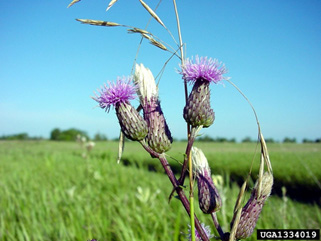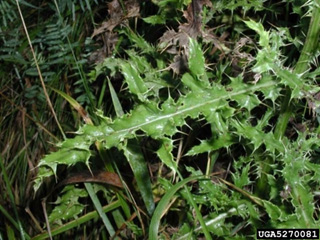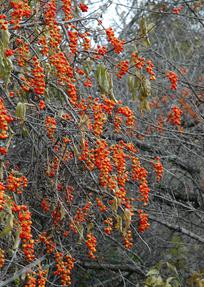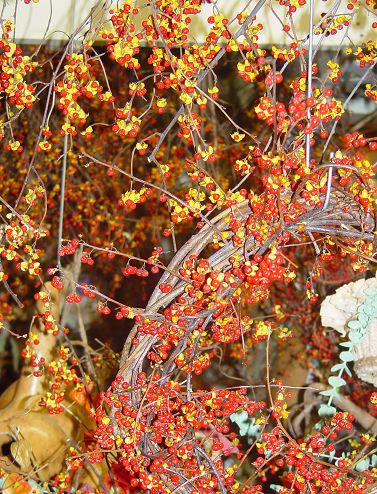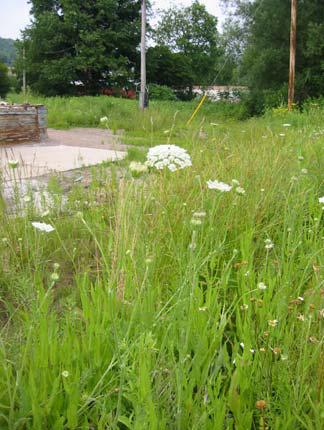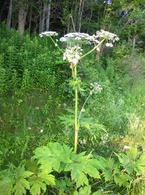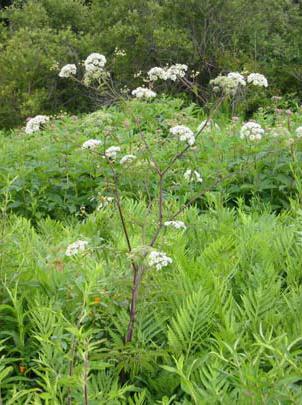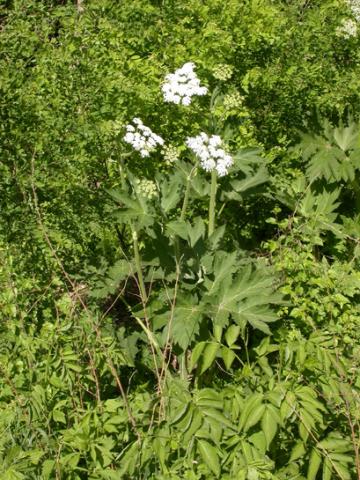Committed to helping you grow
Federated Garden Clubs of Iowa, Inc.
News & Notes ~ from Federated Garden Clubs of Iowa, Inc
Federated Garden Clubs of Iowa, Inc, strives to provide our membership with the most current, up-to-date information. Be sure to check this page often for updates!
News from Jane Buck, Invasive Plants Chair
The Central Region is made up of states Minnesota, Iowa, Missouri, Wisconsin, Michigan, Illinois and Indiana. What invasive plant do all these states have in common?
If you guessed the Canada Thistle (Cirsium arvense) from the Sunflower Family (Asteraceae) you would be correct!
Canada Thistle is also known by a number of other common names including Californian Thistle, Canadian Thistle, Creeping Thistle, Perennial Thistle, Prickly Thistle, Corn Thistle and Field Thistle. It is native to Europe and was introduced in the United States in the 1600s. In its native habitat the standard English name is Creeping Thistle.
So if it isn't native to Canada, why does it carry the name Canada Thistle?! One story has it that Creeping Thistle contaminated a farm seed shipment from Europe which reached the United States through Canada. Henceforth the name Canada Thistle, despite the fact it is not native to Canada.
Generally speaking, an invasive plant crowds out native species as it spreads, potentially invading crop lands at great cost or threatening ecosystems by destroying native plant habitats. Canada Thistle, an aggressive perennial broadleaf plant, is a state-listed noxious weed in all of the Pacific Region states. It can be found along creek banks, forest edges, rangeland, waterway banks, hillsides, overgrazed pastures, gardens, tilled fields, roadsides, and other open, disturbed sites or abandoned sites.
Canada Thistle is a creeping perennial that reproduces from laterally spreading rhizomes, but also from seed. The purple-pink flowered, prickly-leaf plant spreads by wind-blown seeds that can remain viable for many years. The extensive root system consists of a network of vertical and creeping horizontal roots. Most roots occur in the top 1 ½ feet of the soil, however vertical roots may commonly extend to 6 ½ to almost 10 feet deep. Whatever you do, don’t rototill the plants! Rototilling breaks up the roots, but from these pieces may spring many more plants. It is difficult to control Canada Thistle because its extensive root system allows it to recover from control attempts.
Combination control methods are the best form of Canada Thistle management. Canada Thistle can recover from almost any stress thrust upon it because of root nutrient stores. Different types of control are cultural control (grasses and alfalfa which compete effectively with the thistle), chemical (herbicides), mechanical (mowing) and biological (Ceutorhynchus litura-- the stem-mining weevil).
Used alone these methods are seldom effective against the Canada Thistle, but a sound management plan implemented over several years can be successful in reducing Canada Thistle populations. Fire is not effective – it will stimulate this species. Herbicides are most effective with two applications per season: in spring, just before flowering, and in fall on new growth after mowing (treat all stems).
Even a weed can have its good points. It is a seed food for Goldfinch and Linnet and some other finches. Canada Thistle foliage is used as a food by over 20 species of Lepidoptera, including the Painted Lady butterfly.
References:
1. http://www.ext.colostate.edu/pubs/natres/03108.html
http://www.ext.colostate.edu/pubs/natres/03108.html
2. http://en.wikipedia.org/wiki/Cirsium_arvense
http://en.wikipedia.org/wiki/Cirsium_arvense
3. http://www.ehow.com/how_2282156_control-canada-thistle.html
http://www.ehow.com/how_2282156_control-canada-thistle.html
4. dnr.wi.gov/topic/Invasives/fact/CanadaThistle.html
dnr.wi.gov/topic/Invasives/fact/CanadaThistle.html
5. http://mdc.mo.gov/your-property/problem-plants-and-animals/invasive-plants/canada-thistle-control
http://mdc.mo.gov/your-property/problem-plants-and-animals/invasive-plants/canada-thistle-control
6. Invasive.org permission for photos
Invasive.org permission for photos
7. Invasive plant drawing by Gina Bowen
Invasive plant drawing by Gina Bowen
Jane Buck
Invasive Plant Chair
Iowa and Arizona Garden Clubs
Pacific Region Invasive Plant Chair
dwbuck@cfu.net
Photo credits: Flowers - Chris Evans,University of GA
Leslie J. Mehrhoff, University of CT
News from Jane Buck, Invasive Plant Chair
Invasive Plants of Iowa - Oriental Bittersweet Vines
The beautiful orange or-yellow capsules with red berries of the bittersweet vines are coveted for wreaths and fall decorations. But
before you use some, here are some things you need to know. Those beautiful Oriental bittersweet berries can cause significant
problems to Iowa plants should they find their way into the environment.
Oriental bittersweet (Celastrus orbiculatus) has been banned by the Iowa State Legislature after Gov. Terry Brandstad signed the Senate file 317 into law on April 16,2013. What to do if you have this invasive vine and berries in your wreaths or arrangements? Tivon Feeley, coordinator of the Iowa Department of Natural Resources forest health program says. “burn them”. Oriental Bittersweet can be spread by birds, mammals and a rapid growing underground root system. It is extremely difficult to get rid of once established.
How do you tell the difference between the invasive Oriental bittersweet and the American native bittersweet (Celastrus scandens)?
• American bittersweet has orange capsules around red fruits; Oriental bittersweet has yellow capsules around red fruits.
American bittersweet has orange capsules around red fruits; Oriental bittersweet has yellow capsules around red fruits.
• American bittersweet flowers and fruits are only found at the terminal ends of stems, Oriental bittersweet flowers and fruits are found
American bittersweet flowers and fruits are only found at the terminal ends of stems, Oriental bittersweet flowers and fruits are found
all along the stem at leaf axils.
• Leaf shape is highly variable and not a good characteristic for distinguishing American from Oriental bittersweet.
Leaf shape is highly variable and not a good characteristic for distinguishing American from Oriental bittersweet.
Oriental bittersweet outcompetes and displaces American bittersweet to the point that Connecticut now lists the formerly common American bittersweet as a species of concern. Additionally, by hybridizing with American bittersweet, Oriental bittersweet causes further loss of American bittersweet populations.
The key to managing oriental bittersweet, like any invasive, is preventing seed production.
Do your part as a conscientious gardener and destroy the Oriental bittersweet vines and berries. Grow only American bittersweet in your garden if you must have it.
Information for this article was researched through the IOWA DNR at:
Jane Buck
FGCI Invasive Plant Chair
dwbuck@cfu.net
Asian Bittersweet
American Bittersweet
To see information on the invasive plant surveys Click here
News from Jane Buck, Invasive Plants Chair
Click here to read Jane's latest article:
Queen Anne's Lace
Water Hemlock Giant Hogsweed Cow Parsnip


